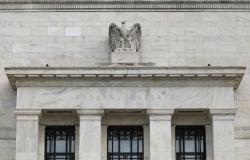Oil prices were little changed Tuesday, holding near two-month highs hit in the previous session, on expectations of increased fuel demand for the summer travel season and possible U.S. interest rate cuts that could boost economic growth.
Brent crude futures rose 20 cents to $86.80 a barrel by 0142 GMT after gaining 1.9% in the previous session to hit the highest level since April 30.
U.S. West Texas Intermediate (WTI) crude rose 13 cents to $83.51 a barrel, after gaining 2.3% to its highest level since April 26.
Gasoline demand in the United States, the world’s largest oil consumer, is expected to rise as the summer travel season resumes with the Independence Day holiday this week. The American Automobile Association predicts that travel during the holiday period will be 5.2% higher than in 2023, and car travel will be 4.8% higher than the previous year.
“This could help gasoline demand recover after a mixed first half of 2024,” ANZ analysts wrote in a note.
On the supply side, markets were bracing for potential disruptions from Hurricane Beryl to U.S. oil refining and offshore production. However, current forecasts indicate that the storm will likely move into Mexico’s Bay of Campeche and cause problems for oil production there.
Beryl hit the Caribbean as a Category 4 storm on Monday, and the US National Hurricane Center warned of an “extremely dangerous situation” after it strengthened from Category 1 to Category 2 in the space of 10 hours.
Signs of falling inflation in the United States are reviving hopes of an interest rate cut by the Federal Reserve, perhaps in September.
A report released Monday showed that U.S. manufacturing activity contracted for a third month, and prices paid by manufacturers for some inputs fell to their lowest level in six months.
With a Commerce Department report on Friday showing that U.S. inflation data was unchanged in May, that could strengthen the case for lowering U.S. interest rates, a move that would boost economic activity and demand for oil.
However, signs of weaker-than-expected demand growth limited gains in oil prices.
Some data show that crude imports in Asia, the world’s largest oil-consuming region, in the first half of 2024 were lower than last year. This was mainly due to lower imports in China, the world’s largest oil importer and second-largest consumer.






